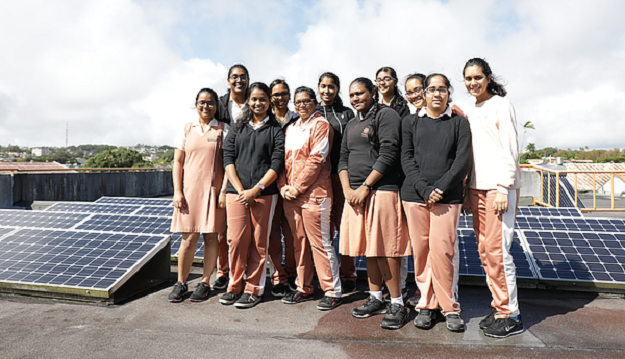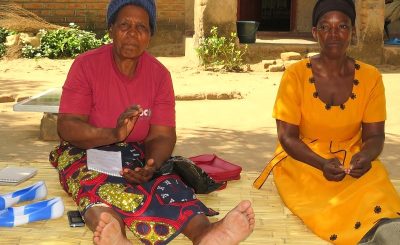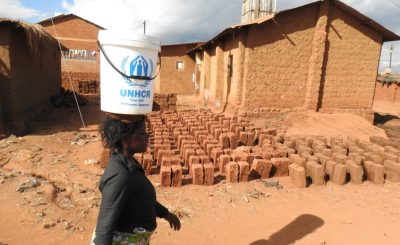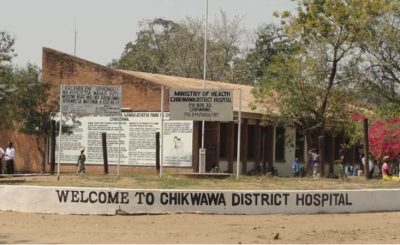A common approach and strong regional instruments are supporting SADC’s island states which are most at risk from the impact of climate change
It’s a blustery cloudy day in the town of Curepipe, a few kilometres south of Mauritius’ capital Port Louis. But that doesn’t stop the Grade 13 girls of Hindu Girls College from climbing the stairs to the roof to show off their pride and joy – an array of solar panels. It’s the school’s response to climate change and they’re way ahead of their peers in most parts of the world.School Rector Andrea Gungadin is excited by the project.
“In 2011 our board members decided to start using sustainable energy after the Mauritian government had begun a campaign around these issues,” she says. The school researched solar energy and “the decision was taken to set up a three kilowatt solar photovoltaic system on the roof of the school”.
Photovoltaic cells convert the sun’s energy directly into electricity which is then stored in a large battery called an inverter and provides most of the school’s power needs. Mauritius has no oil or gas deposits and has been forced to import diesel for large generators which produce electricity.
The Central Electricity Board, a government-owned company, provides around 40% of the electricity sold across the grid system with the remainder generated by independent power producers. While most generation is based on imported coal or diesel, some producers burn a mixture of agricultural waste from sugar plantations and coal.
Mauritius’ electricity demand is rising at just over 3% a year and an alternative method to provide power is needed on an island washed by sun. It’s also obvious to those in education that this message needs to filter down to citizens.
“We regularly take our students up there to look at the system and see that they’ll be able to use these ideas in their own houses when they grow up and continue with this vision of a sustainable Mauritius,” says Gungadin. Other schools in the area – and from other SADC countries such as Seychelles and Tanzania – have copied the idea at a time when solar energy is becoming more important as part of the response to climate change.
Grade 13 pupil Urmila Motar recognises that the project is relevant beyond the shores of Mauritius. “SADC and other organisations have supported alternative energy and in this new millennium it’s very important to note that projects like these are the future,” she says.
Another example for the innovative use of solar energy is found in Zambia, where the sun powers agricultural water pumps. Just north of the Zambian capital, Lusaka, farmer Elias Moyo explained how he built his own solar pump.
“Now I can grow breadfruit, tomatoes, chillies, onions and ochra. When it’s dry, I just start the pump on a sunny day and fill up the tank,” he says, pointing at a large green plastic tank. For farmers like him, this means improved productivity.
From recharging mobile phones to supplying energy for lights so that school children can do their homework at night, solar power improves countless lives in the region. In Mauritius’ capital, an early adopter of green energy and one of SADC’s most enthusiastic sustainable energy experts is Environment Minister Etienne Sinatambou.
“The challenge for Mauritius is the most extreme in SADC. If you looked at the UN World Report 2016, we are the seventh most exposed island country in the world to sea level rise,” he said. Other SADC countries on the list of exposed countries include Madagascar and Mozambique.
“Already we have seen accelerated sea level rise, accentuated beach erosion, an increase in both the frequency and intensity of extreme weather and a decreasing pattern in rainfall so we are in real danger from recurrent floods,” said Sinatambou.
“From 2003 to 2017, the sea level rise has more than doubled compared to the average for the last 25 years, and yet our rainfall level has dropped to pre-1930 levels, so we need to be careful.”
Twenty percent of Mauritius’ beaches are suffering from long term erosion. For a country which generates over 30% of its Gross Domestic Product from tourism, this is a significant risk going forward. As the former minister of foreign affairs and regional integration, Sinatambou is well placed to discuss the role of SADC around the island nations.
“SADC is now assisting countries in the region with regard to climate change,” he says. As an example, he points to the global climate negotiations in Paris in 2015, where SADC provided the platform for a common position.
The Member States’ common position for the so-called COP21 negotiations included an emphasis on adapting to climate change while also focusing on mitigation through finance, technology transfer and adoption, and capacity building. For Southern Africa as one of the regions most exposed to increasing temperatures and changing weather patterns, stabilising the amount of carbon in the atmosphere while being able to develop its economies is of paramount importance. By speaking with one voice, the Member States ensured they were heard on the global stage.
Climate change is also a key aspect of the Regional Indicative Strategic Integration Plan (RISDP) which is guiding SADC’s agenda until 2020. It has led to the formulation of regional initiatives like the SADC Policy Paper on Climate Change, the SADC Water Sector Climate Change Adaptation Strategy, and the SADC Climate Change Strategy and Action Plan.
Sinatambou believes that the momentum for joint action is gaining. “We now have SADC voting on the development of a regional programme of climate change which is great,” he says. “What we now see is SADC working with the Indian Ocean Commission towards a cohesive plan to face this threat.”
“The regional bodies are working together and the people in the region want to see positive results,” Sinatambou adds. “Our people not only need but deserve to be helped, and the best way for this to happen is to show concrete outcomes.”
The RISDP also foresees response plans to emergencies and the Environment Minister says his country has now put in place that plan in Mauritius.
“The early warning system here against storm surges features a six-day warning system which determines both where the water will strike the island and just how bad it will be. It’s this kind of specific plan that is most welcome by all SADC Member States.”
SADC Executive Secretary Dr Stergomena Lawrence Tax says success can only be ensured through regional integration and harmonising systems and projects.
“The commitment should not just be saying ‘I am committed’. We need also to implement the ideas. This needs to be done by all of us, at different levels, the government, public sector and the private sector,” Dr Tax says.
As the school solar projects highlights in Mauritius, the region’s approach to climate change has put innovation at the forefront of developing of alternative energy models in Southern Africa.
SADC Policy: Climate change is of critical relevance to SADC, leading to the SADC Policy Paper on Climate Change in 2012. The paper guides the region’s response to climate change by suggesting that it be multidisciplinary, breaking through silos on national and sectoral levels. It aligns the region behind the vision of addressing the impacts of climate change through the successful implementation of adaptation and mitigation actions to enhance regional economic and social resilience.





